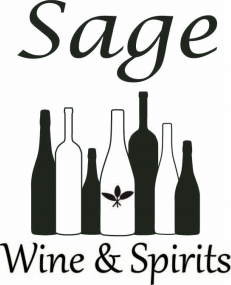|
Cantine Monfort Terre del Föhn Marzemino ($12.99)
Trentino From the producer: "The Marzemino grape occupies a prominent place in the wine growing world in Trentino thanks to its excellent quality. The origins of the vine are lost in history but it is likely that it comes from Marzemin, a village in Carinthia. Currently Marzemino is cultivated in particular on the right bank of the river Adige and, especially in the foothills of Nomi, Pomarolo, Isera and Mori. In the Vallagarina the variety has found ideal soil and climate conditions which lend it its unmistakable organoleptic characteristics. To distinguish it from other similar wines it is called 'Marzemino Gentile' where 'gentile' (gentle) is justified by the matchless delicacy of the wine. WINE MAKING METHOD Brief red wine fermentation on the skins, malolactic fermentation and refining in stainless steel vats. Brief ageing in bottle. TASTING NOTES Colour: bright ruby red . Bouquet: delicately fruity (fruits of the forest) with floral notes of sweet violet Palate: dry, harmonious, pleasing for its fruity notes and slight almond finish. FOOD MATCHING First courses with meat sauces, white meats, poultry, cheeses. This wine is famous for its fruity taste. It is an indigenous wine mentioned in the Opera 'Don Giovanni' of Mozart." From me: I'm really into indigenous grapes and wines that are off the beaten path, so for me this is a really compelling one. It drinks a bit like a Pinot Noir in that it's light-bodied and brightly fruit-forward. I think at $12.99 it's a great alternative to Pinot, but it also stands on its own as a cool climate red. Organic. Cantine Monfort Teroldego Rotaliano ($19.99) Trentino From the producer: "This wine is unanimously considered the prince of Trentino wines. The vine is native to Trentino and the wine shares certain biochemical characteristics with Marzemino. It takes its name from a village near the town of Mezzolombardo called Teroldeghe. The fundamental characteristic of this variety is that it grows and gives its best only in the Piana Rotaliana area whose soil is the result of alluvial detritus deposited by the River Noce. WINE MAKING METHOD Traditional red-wine fermentation on the skins, malolactic fermentation and refining first in stainless steel, then in bottle for some months. TASTING NOTES Colour: intense ruby red with purple highlights. Bouquet: intense, fruity with blackberry and bilberry notes. Palate: full, warm with a rounded softness. FOOD MATCHING Roasted red meats, grilled meats and strongly flavoured cheeses." From me: Like Marzemino, this is a fairly obscure indigenous grape. This wine has a little more body, though it retains a nice acidity that comes from the cooler climate in which the vines grow. The flavor profile is somewhere between Pinot Noir and Gamay, but with more richness.
0 Comments
Leave a Reply. |
Archives
August 2023
Categories
All
|

 RSS Feed
RSS Feed